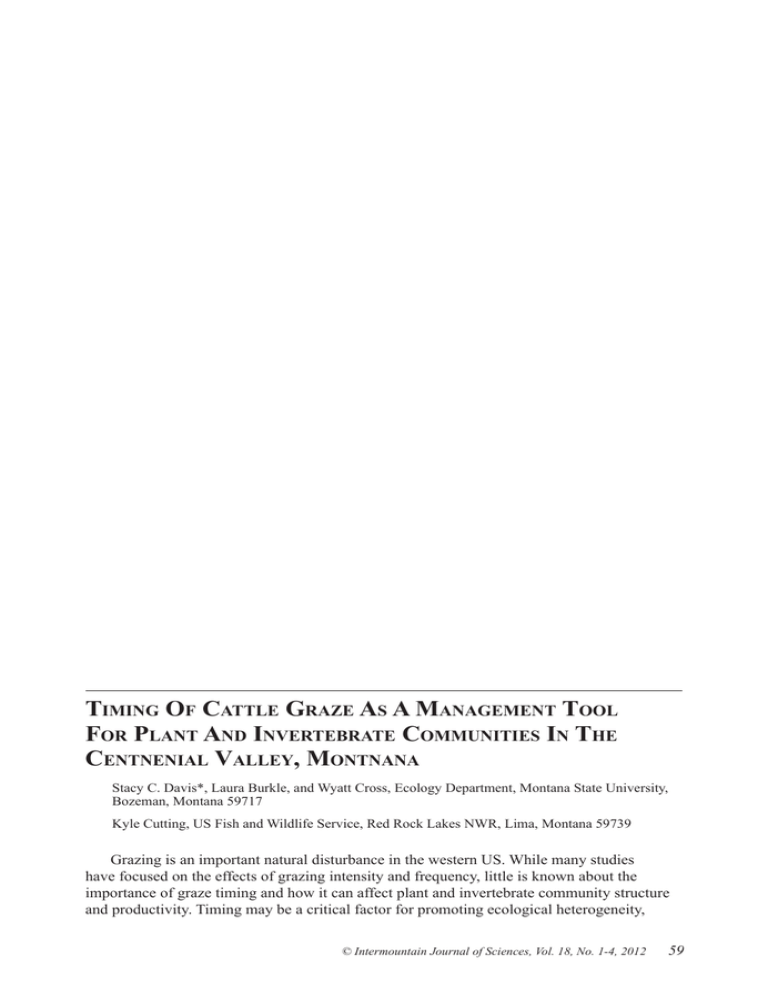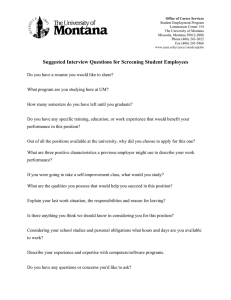t o c g
advertisement

Timing Of Cattle Graze As A Management Tool For Plant And Invertebrate Communities In The Centnenial Valley, Montnana Stacy C. Davis*, Laura Burkle, and Wyatt Cross, Ecology Department, Montana State University, Bozeman, Montana 59717 Kyle Cutting, US Fish and Wildlife Service, Red Rock Lakes NWR, Lima, Montana 59739 Grazing is an important natural disturbance in the western US. While many studies have focused on the effects of grazing intensity and frequency, little is known about the importance of graze timing and how it can affect plant and invertebrate community structure and productivity. Timing may be a critical factor for promoting ecological heterogeneity, © Intermountain Journal of Sciences, Vol. 18, No. 1-4, 2012 59 biological diversity, and abundance of food resources for native birds. Our primary goal is to understand how timing of graze and climate variability interact to influence plant and invertebrate communities throughout the growing season in wet meadows and grasslands in the Centennial Valley of southwest Montana. In 2011, control (no graze), early graze (beginning June 15), and traditional late graze (beginning July 15) treatments were established and replicated in a heterogeneous, irrigated, wet meadow habitat. From June-September, plant and invertebrate communities were quantitatively sampled to examine dynamics of biomass and diversity. In 2012, a similar experimental design will be implemented in a less-disturbed and drier native grassland. A new component will examine interactions between climate variability and timing by incorporating a water-addition treatment to simulate the extra moisture resulting from a wet year. We predict that increased climate variability will likely impact wet meadow and grassland habitat plant and insect phenology, with timing of graze becoming particularly critical during dry years. We will discuss results from 2011 and where we plan to go in 2012 with the water-addition treatment. 60 © Intermountain Journal of Sciences, Vol. 18, No. 1-4, 2012




